Agnes, Ancoats will miss you
[This is one of series of blogs to promote my crowdfunding campaign to produce a 30-year retrospective book.]
Agnes Lewis was born at 24, Pollard Street East in Ancoats.
“I always remember the wallpaper, deep blue with great big red roses, I loved it. Opposite was Bazley’s Mill, a great big mill. Every morning I woke up to the sound of the machine starting off and all the clogs coming up the street, it was marvellous.
“There was no bathroom in our house, we brought out a tin bath on a Friday night and put it in front of the fire. We had a toilet in the yard, and what a toilet that was. I used to be frightened to death of it. I’d run in quickly and get out as fast as I could.”
Agnes was born with polio and a deformed leg. Despite operations to straighten it, she had worn a calliper since she was a teenager.
“When I was 15 I started a sewing job at Lawrence’s on Pollard Street. I’ve always tried to hide the fact I was lame, so I took the calliper off when I started there. To keep my secret this leg never touch the treadmill, I only used one leg. But there’s been a lot of wear and tear over the years and that’s what’s caused the arthritis.
“I was always frightened of leaving Lawrence’s in case somewhere else would realise I could only use one leg and wouldn’t give me a job so I stayed there for 47 years.
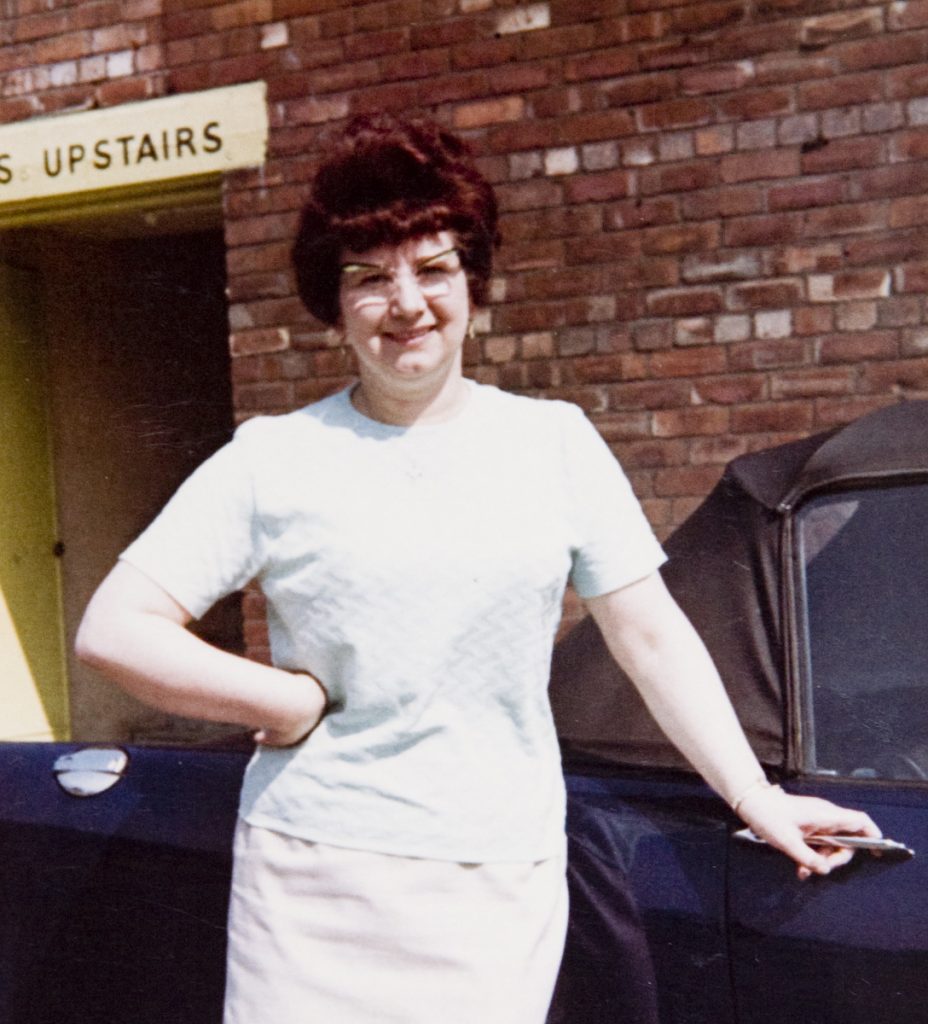
“Funnily enough all the lads were after me at first. But I never bothered, I didn’t want a boyfriend in case they found out about my leg. But I used to go to the pictures with all the girls on a Friday night, a big row of us. It was great.”
I first photographed Agnes outside her back door in July 2002. She and her older sister Liz, had moved to the house when it was new, after their parents had died. Neither had married. Later Agnes nursed Liz through Alzheimer’s before she died in 1993.
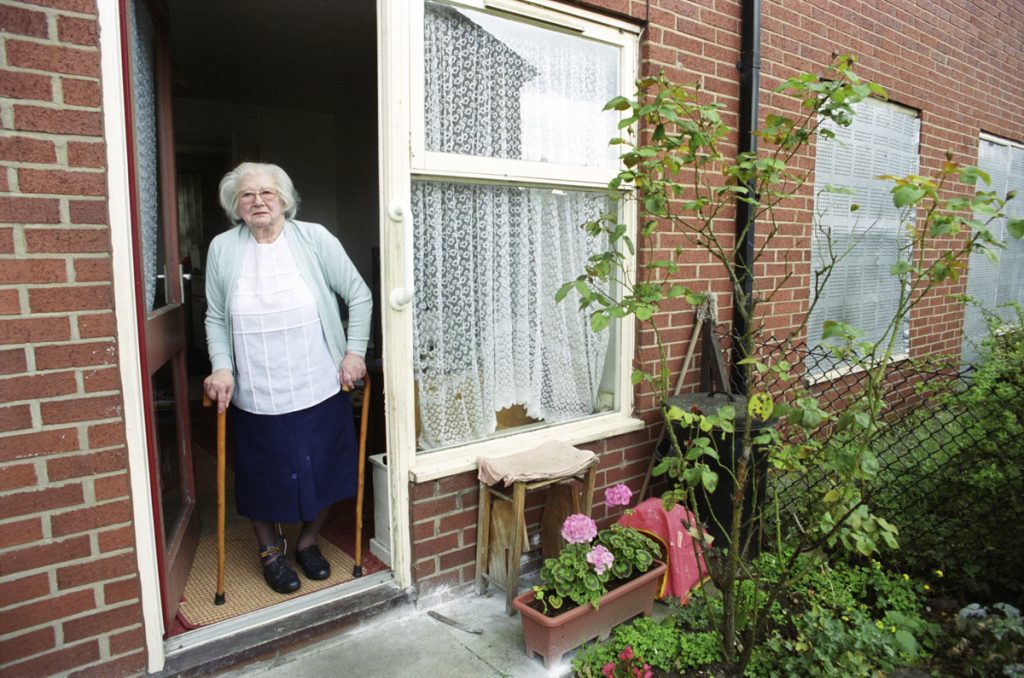
The Cardroom Estate was being demolished around her, and other residents were moving into temporary accommodation. She, however, decided she’d wait until Guest Street – the second phase of the social housing – was complete, so she’d only have to move once.
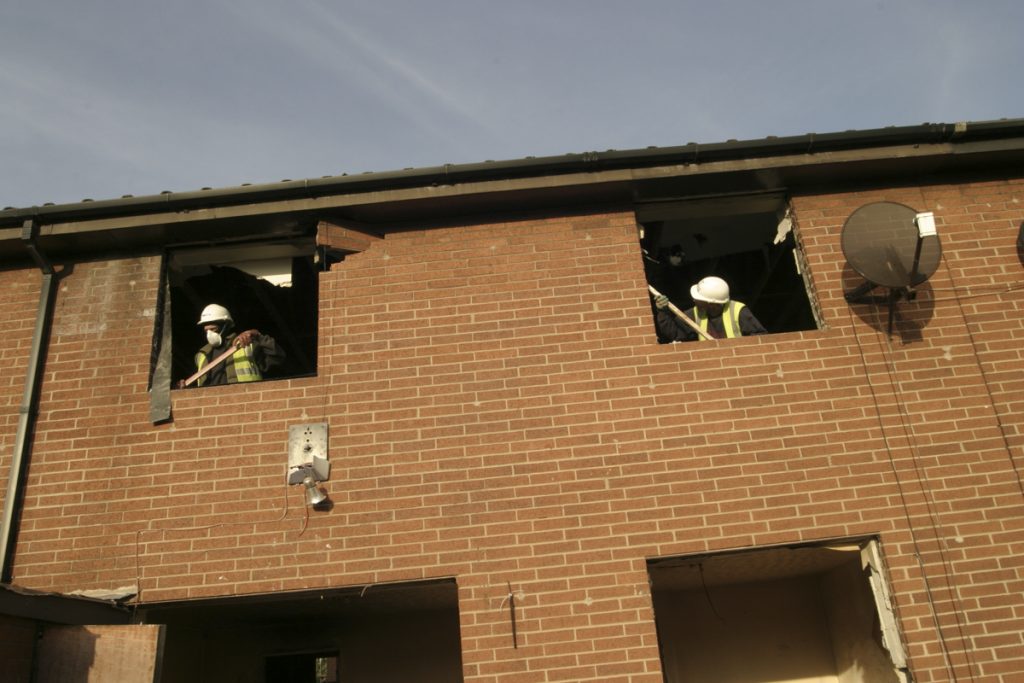
I’d pop in to see Agnes often as I walked around the estate, capturing the stages of demolition. She was practically house bound and was happy to make a brew and have some company. Agnes loved her cats and had acquired a number over the years. Mostly they were strays and stuck around enjoying her hospitality.
Four years later, she still hadn’t moved, and I asked if I could photograph her by her back door again, the photographs to appear in my upcoming Our House exhibition at The Lowry. This time she insisted on both getting her hair done first – I gave her a lift to the local hairdressers – and wanting to sit down so she didn’t have to wear the calliper.
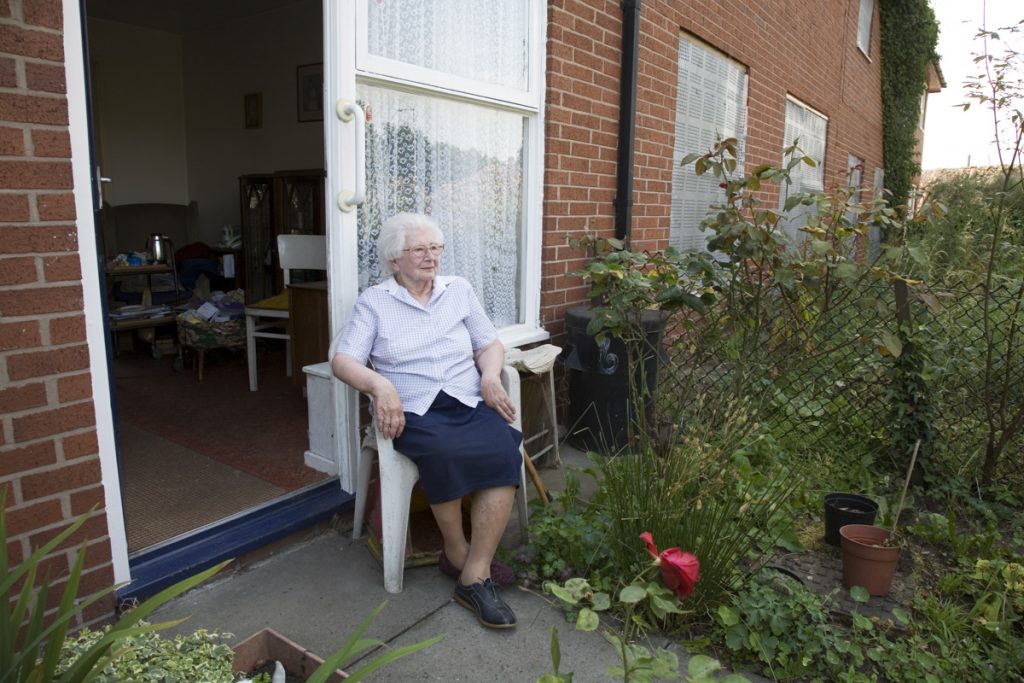
By March 2007 her bungalow was ready and, on the day of the move, I arrived early to document the occasion. One neighbour was pulling up flowers in her garden to transplant across the way. Most of her furniture had already gone and she sat in an empty living room surrounded by cat baskets.
“I had three cats. Two of them were safely packed away but I didn’t know where the little ‘un had gone, upstairs somewhere. When the men came to get my suite, the door was left open and poor little Bobby flew out and I never saw him again.
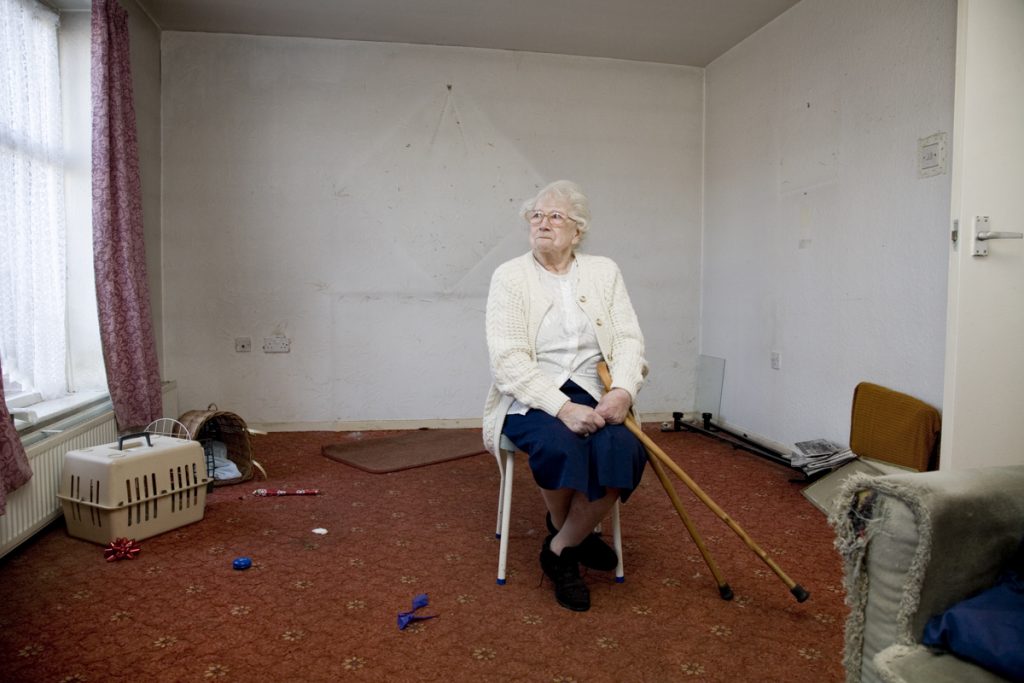
“Then I came over to Guest Street… oh…. it was all laid out lovely, the curtains and carpets I’d picked. All my old furniture was there: it was just like what I’d left in Spinning Jenny Walk. But I was tired, really tired. I thought, this was it, I’m finished… if I last another week it’ll be a miracle. I felt desperate. It must have been six or eight weeks when I really felt down. Suddenly I came out of it… I’m not back to square one, by any means, but I’m on the road.”
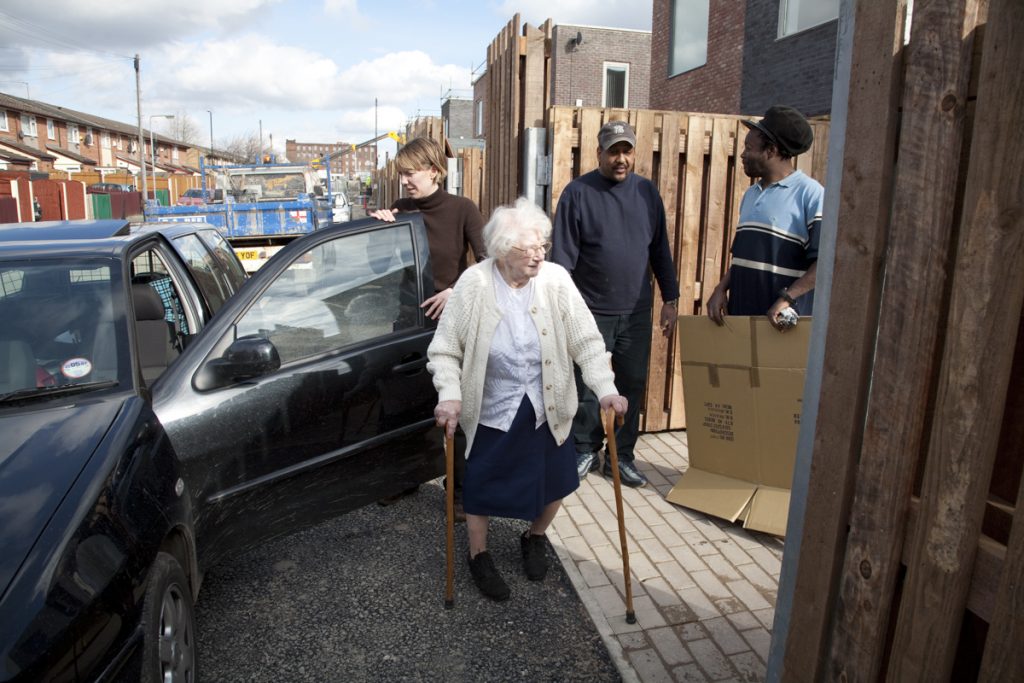
Agnes loved her new bungalow, apart from one simple design fault. In her old place, she’d spend many hours watching the activity of the estate from her window, waving to neighbours as they passed and ready to send anyone packing who was causing a nuisance. In the Guest Street bungalow a high, wooden fence surrounded her back yard and, sitting at home with her cats, she often complained of missing out.
With the financial crisis of 2008, my New Islington commission came to an end but I continued to work in east Manchester and would again pop in to see Agnes. I’d change a light bulb, run an errand or, when she complained of not being able to do her regular crossword, I organised a trip to the in-store optician at Asda at Eastlands where she enjoyed her first ever trip around the aisles in a mobility scooter.
In 2011, Agnes was taken into hospital where she was diagnosed with cancer that had already spread throughout her body. Supported by the daughter of an old friend, she was eventually able to move back home where she was cared for by agency nurses, neighbours and friends until her death 11 days later.
I was invited to write a eulogy which I delivered at her funeral, where I acknowledged the community support I’d witnessed over the last few years:
‘Despite not having family of her own, Agnes has enjoyed the friendship that you lot, her Ancoats neighbours, give automatically without thinking. For Agnes, it’s been more than keeping an eye out for her: you have been her family and there aren’t many places left where that would happen. On behalf of Agnes, let me pay tribute and say thank you to you all.
‘So Agnes, you were a lovely lady and I will miss you. Your good friends and neighbours will miss you and Ancoats will miss you too. God bless.’